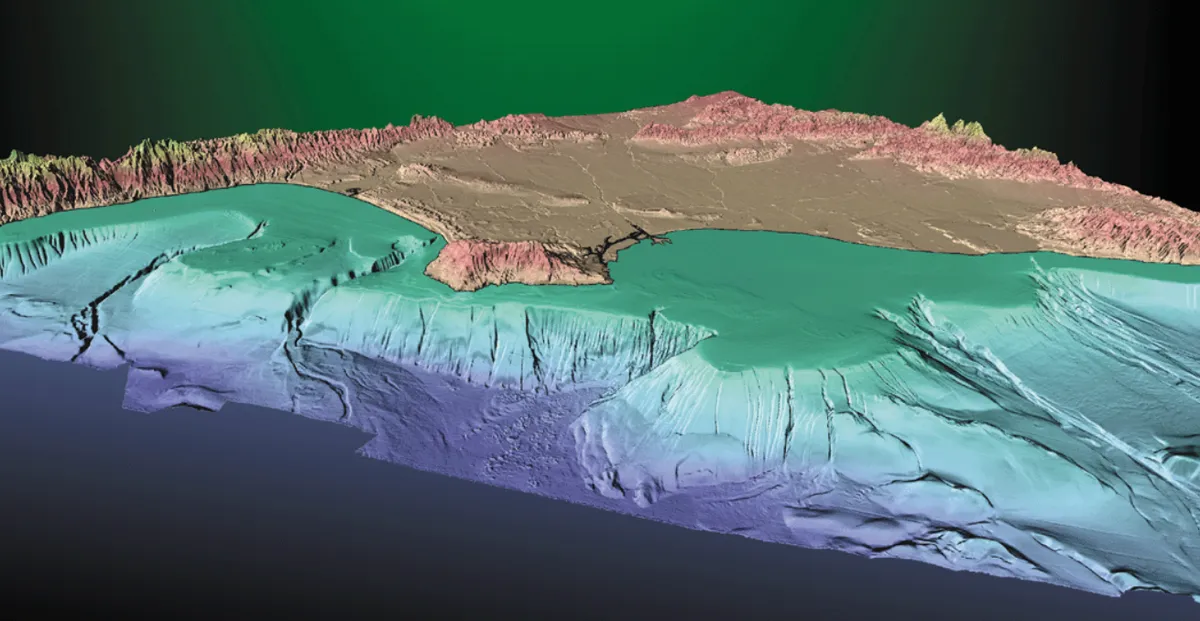The U.S. Announces Significant Expansion of Maritime Territory
January 20, 2024 - Reading time: 6 minutes

In a move of historic proportions, the United States has declared a substantial increase in its territorial expanse, claiming an additional one million square kilometers of the continental shelf.
This expansion, equating to an area about 60 percent the size of Alaska, marks a significant shift in the country’s maritime boundaries.
The change stems from a redefinition of the U.S. continental shelf boundaries, as outlined by the State Department. By invoking international maritime law, the U.S. has extended its continental shelf—a seabed area around large landmasses in relatively shallow waters—beyond its previously recognized limits. This expansion spreads across seven distinct oceanic regions, with a significant portion in the Arctic.
Extended Continental Shelf (ECS)
The concept of the Extended Continental Shelf (ECS) is central to understanding this territorial augmentation. Under international law, coastal nations have the right to claim these extended shelves and exploit their resources. With this declaration, the U.S. joins over 75 countries that have established their ECS limits beyond 200 nautical miles from their coasts.
The journey to this monumental declaration began in 2003, involving collaborations between multiple U.S. agencies, including the State Department, NOAA, and the U.S. Geological Survey. Their mission was to gather extensive geological data to determine the outer limits of the U.S. continental shelf. This effort culminated on December 19, 2023, when the State Department announced the new geographic coordinates marking the U.S. ECS.
U.S. Territory Expansion and Marine Resources
The newly claimed areas include regions in the Arctic, the east coast Atlantic, the Bering Sea, the west coast Pacific, the Mariana Islands, and two areas in the Gulf of Mexico. This expansion, equivalent to double the size of California, significantly bolsters the nation's control over marine resources.
Mead Treadwell, a former Alaska lieutenant governor and former chair of the U.S. Arctic Research Commission, remarked, “America is larger than it was yesterday. It’s not quite the Louisiana Purchase, not quite the purchase of Alaska, but it’s a substantial addition.”
Overview of the United States: 50 States and 14 Territories
The five permanently inhabited territories are Puerto Rico, Guam, the U.S. Virgin Islands, American Samoa, and the Northern Mariana Islands. The U.S. Census Bureau provides statistics for the United States population, ethnicity, religion, and other categories for the 50 states and Washington, D.C. Separate statistics are maintained for the five inhabited territories. The most recent population estimates for the states and territories can be found on the U.S. Census Bureau's website
| Territory | Census population |
|---|---|
| Puerto Rico | 3,285,874 |
| Guam | 168,801 |
| U.S. Virgin Islands | 106,235 |
| American Samoa | 49,437 |
| Northern Mariana Islands | 57,917 |
| District of Columbia | 689,545 |
The most recent GDP data is for the third quarter of 2023, showing an increase in real GDP for all 50 states and the District of Columbia.For the total area measurements of the 50 states, the District of Columbia, Puerto Rico, and the Island Areas, including land and water area, the U.S. Census Bureau provides a table with the relevant measurements
Strong Scientific Foundation
While this claim adheres to the United Nations Convention on the Law of the Sea, it remains unratified by the U.S. Senate. Despite this, the U.S. government has confidently announced its continental shelf limits, underpinned by robust scientific evidence.

Mining and Research Rights
The declaration focuses on control over seabed resources, including rights to mining, research, and pipeline activities. It does not extend U.S. jurisdiction over water columns or fishing rights beyond 200 miles off its coast.
Controversies and Opinions
This territorial claim, while based on extensive scientific research, has sparked a debate over its legitimacy and potential geopolitical ramifications. Critics argue that the U.S. has unilaterally expanded its territory without the formal ratification of the United Nations Convention on the Law of the Sea, raising questions about international legal standards and precedents.
Environmentalists have expressed concerns about the potential ecological impact, particularly in the Arctic region. The expansion could lead to increased mining, shipping, and fishing activities, posing threats to fragile ecosystems and contributing to the already pressing issue of climate change.
From a geopolitical perspective, this move could intensify territorial disputes, especially in areas like the Arctic, where several nations have competing claims. The U.S. expansion sets a precedent that might encourage other countries to assert similar claims, potentially leading to conflicts over maritime boundaries and resources.
In conclusion, while the expansion of U.S. maritime territory opens new avenues for resource exploration and economic growth, it also poses significant challenges. Balancing national interests with international legal norms, environmental sustainability, and geopolitical stability will be crucial in navigating the implications of this expansive move.

DW Staff
David Lintott is the Editor-in-Chief, leading our team of talented freelance journalists. He specializes in covering culture, sport, and society. Originally from the decaying seaside town of Eastbourne, he attributes his insightful world-weariness to his roots in this unique setting.




